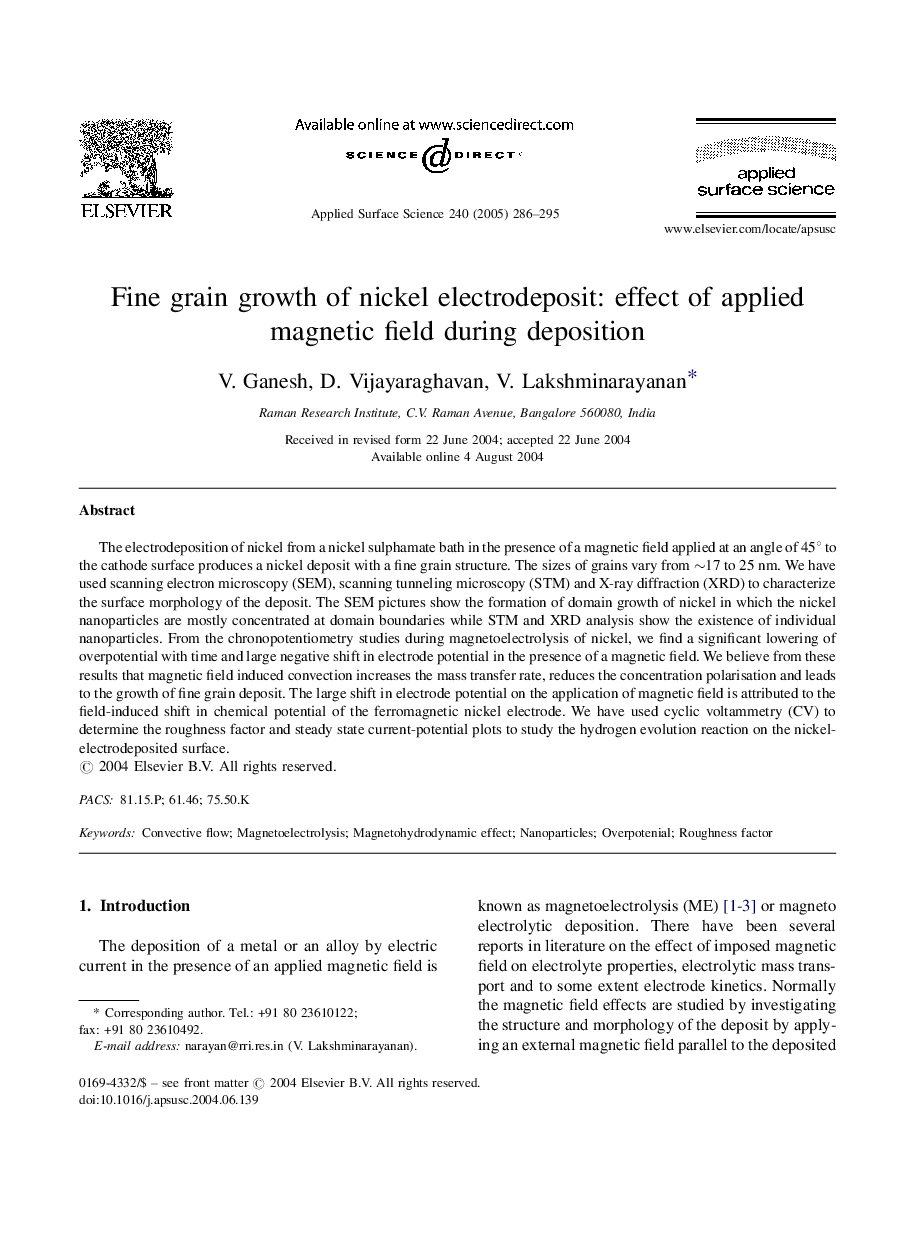| Article ID | Journal | Published Year | Pages | File Type |
|---|---|---|---|---|
| 9567648 | Applied Surface Science | 2005 | 10 Pages |
Abstract
The electrodeposition of nickel from a nickel sulphamate bath in the presence of a magnetic field applied at an angle of 45° to the cathode surface produces a nickel deposit with a fine grain structure. The sizes of grains vary from â¼17 to 25 nm. We have used scanning electron microscopy (SEM), scanning tunneling microscopy (STM) and X-ray diffraction (XRD) to characterize the surface morphology of the deposit. The SEM pictures show the formation of domain growth of nickel in which the nickel nanoparticles are mostly concentrated at domain boundaries while STM and XRD analysis show the existence of individual nanoparticles. From the chronopotentiometry studies during magnetoelectrolysis of nickel, we find a significant lowering of overpotential with time and large negative shift in electrode potential in the presence of a magnetic field. We believe from these results that magnetic field induced convection increases the mass transfer rate, reduces the concentration polarisation and leads to the growth of fine grain deposit. The large shift in electrode potential on the application of magnetic field is attributed to the field-induced shift in chemical potential of the ferromagnetic nickel electrode. We have used cyclic voltammetry (CV) to determine the roughness factor and steady state current-potential plots to study the hydrogen evolution reaction on the nickel-electrodeposited surface.
Keywords
Related Topics
Physical Sciences and Engineering
Chemistry
Physical and Theoretical Chemistry
Authors
V. Ganesh, D. Vijayaraghavan, V. Lakshminarayanan,
